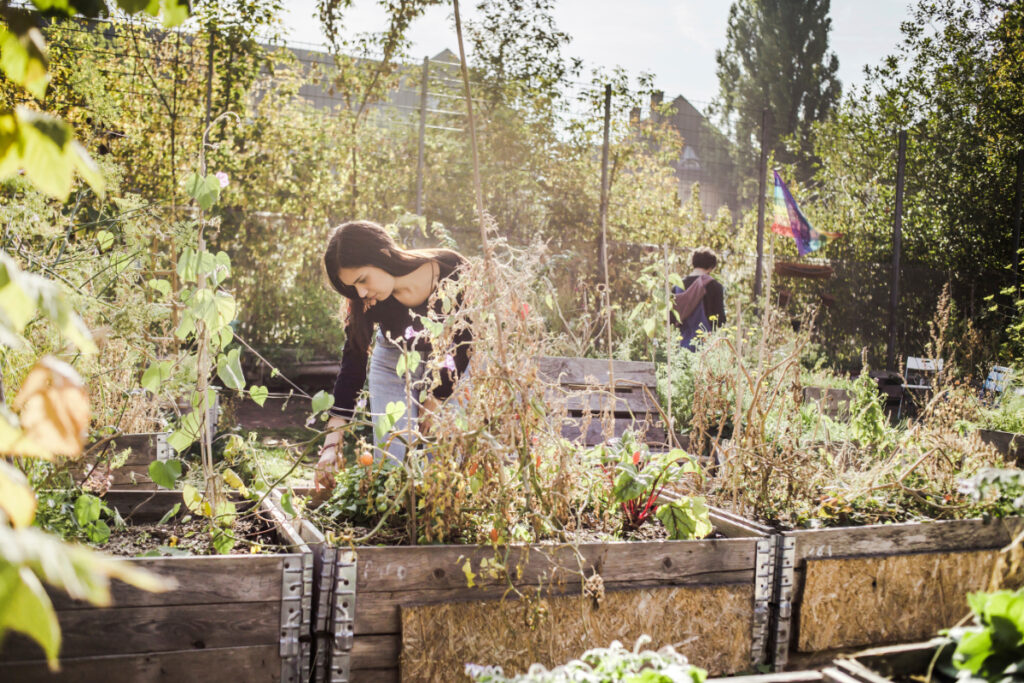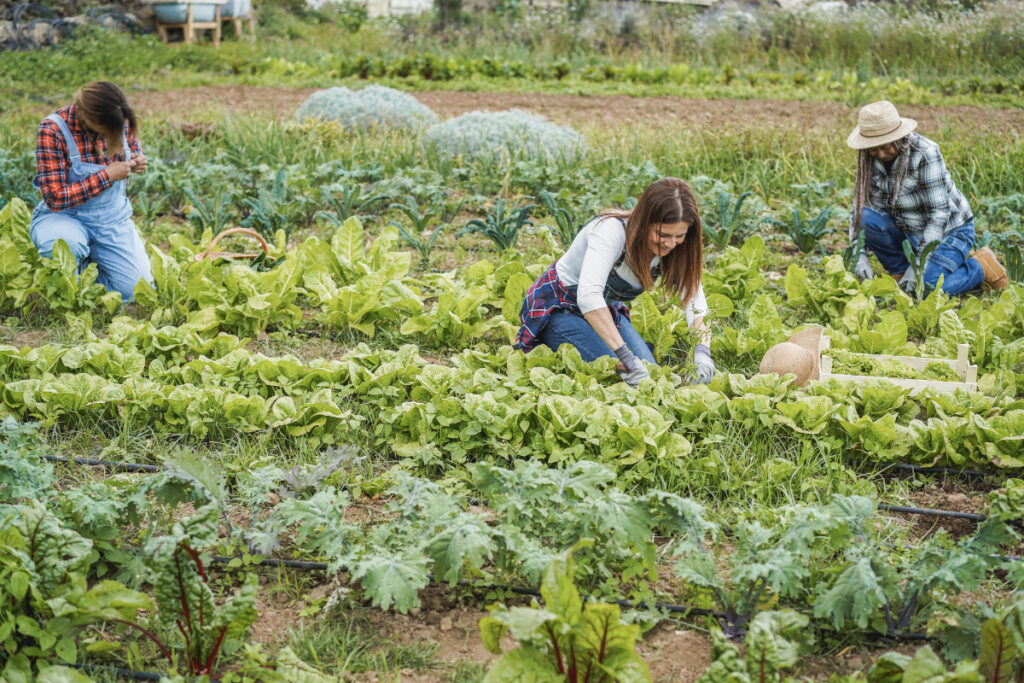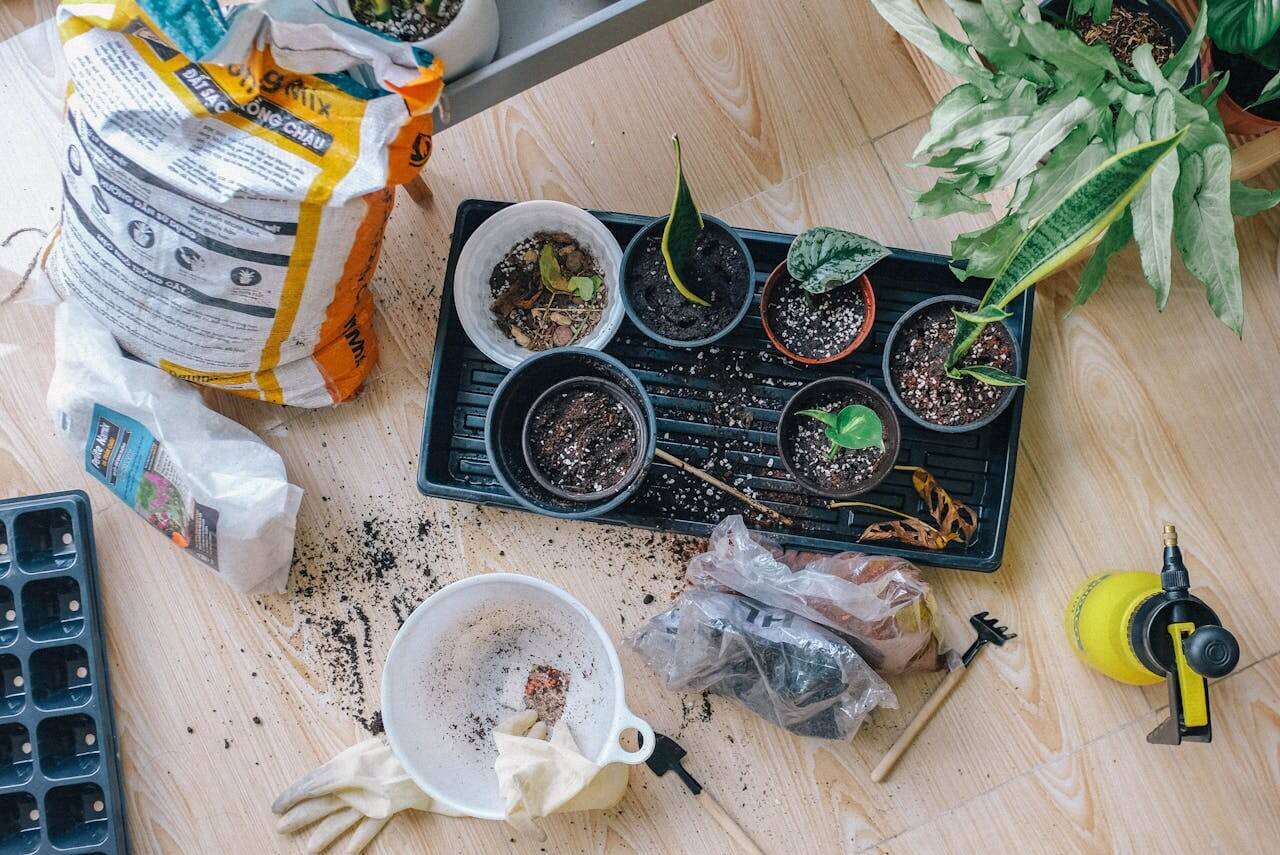In the midst of skyscrapers and bustling streets, urban agriculture is growing in popularity. As cities expand and populations move to be closer to the amenities cities offer, the need for local food production and desire to know where one’s food comes from increases. Urban agriculture addresses these challenges on a personal and business level. From indoor growing to urban gardening, and scaling to urban farming this article delves into each of these realms, exploring their unique characteristics and contributions to a more sustainable future.
Indoor Growing: Growing in Your Home or Office
Space Needs: One of the most enticing aspects of indoor growing is its versatility in space utilization. From compact apartments to spacious office spaces, indoor growing can adapt to a wide range of environments. Home vertical farming systems, hydroponic setups, and aquaponic systems maximize space efficiency, allowing cultivation in areas where traditional agriculture would be impractical or impossible. If you are just getting started, window boxes, potted plants, or hanging baskets are a great way to get plants into your indoor space in a small footprint.
Environment, Climate, and Sun: Indoor growing liberates you from the constraints of outdoor weather patterns and seasonal fluctuations. The controlled environment enables regulation of temperature, humidity, and light, optimizing growing year-round. Plus, advanced lighting technologies, such as LED and grow lights, mimic the full spectrum of sunlight, ensuring optimal photosynthesis and crop development regardless of external conditions. Of course if you live in a warmer climate with sunnier weather, you may not need more technology to grow indoors than placing your plants near window light!
Considerations: Indoor growing appeals to urban dwellers with limited outdoor space or those seeking year-round harvests. It offers unparalleled control over growing conditions, making it ideal for cultivating delicate or high-value crops. The initial investment in equipment is small, and without using grow lights, energy costs are a minimum. It’s easy to get started, and scaling is accessible.
Sustainability: While indoor growing can require energy inputs for lighting and climate control, its potential for high yields per square foot can offset its environmental footprint. Furthermore, the absence of pesticides and herbicides reduces chemical pollution, contributing to healthier ecosystems.
Community Element: Indoor growing fosters a sense of community among urban residents through initiatives like shared grow spaces or rooftop gardens. These collaborative efforts not only promote social cohesion but also facilitate knowledge exchange and skill-sharing among participants.
Food Security: Besides decentralizing food production and bringing it closer to consumers, indoor growing is calming and fun for anyone involved. Indoor gardening can help support food security in urban areas — the food supply chain doesn’t get closer than growing your food yourself. Any growing you do reduces dependence on long-distance transportation, lowers your carbon footprint, and mitigates the risk of disruptions to global food distribution networks.
Agricultural Practices: Indoor gardening can be as simple as potted plants on a windowsill, or it can expand to encompass a diverse array of cultivation methods including hydroponics, aeroponics, and vertical farming. These innovative techniques optimize resource utilization, minimize water consumption, and maximize crop productivity.
Self-Sufficiency: Urbanites embracing indoor growing take proactive steps towards self-sufficiency, gaining greater control over their food supply chain. By cultivating fresh produce at home, individuals reduce reliance on grocery stores and industrialized agriculture, promoting resilience in the face of economic or environmental uncertainties.
Resource Management: Indoor growing prioritizes resource efficiency through strategies like water recycling, nutrient cycling, and energy conservation. Closed-loop systems minimize waste and pollution, exemplifying sustainable agricultural practices for urban environments.
Urban Gardening: Food Production in the Concrete Jungle

Space Needs: Urban gardening celebrates the creative use of outdoor spaces, from backyard plots to community gardens nestled amidst city blocks. Container gardening, planter boxes, raised beds, and vertical planters transform even the smallest patches of land into vibrant green sanctuaries.
Environment, Climate, and Sun: Urban gardens thrive under the open sky, basking in the natural sunlight and fresh air of their surroundings. While weather conditions and seasonal variations influence gardening success, urban gardeners adapt their planting schedules and crop selection to optimize yields throughout the year.
Considerations: Urban gardening appeals to individuals passionate about connecting with nature and beautifying their surroundings. It offers a hands-on gardening experience suitable for beginners and seasoned enthusiasts alike. However, limited space and soil quality in urban environments may pose challenges for some gardeners.
Sustainability: Urban gardens promote biodiversity, providing vital habitat for pollinators and beneficial insects within urban ecosystems. Organic gardening practices, such as composting and mulching, enrich soil fertility and enhance ecosystem resilience.
Community Element: Community gardens serve as hubs of social interaction and cultural exchange, bringing together people of diverse backgrounds around a shared passion for gardening. Collaborative maintenance efforts strengthen community bonds and promote collective stewardship of public green spaces.
Food Security: Urban gardens contribute to food security by democratizing access to fresh, locally-grown produce. By empowering individuals to grow their own food, urban gardening reduces reliance on industrialized agriculture and fosters food sovereignty within communities.
Agricultural Practices: Urban gardeners employ a variety of cultivation techniques, from traditional soil-based gardening to innovative methods like permaculture and companion planting. By mimicking natural ecosystems, these practices enhance soil health, pest resistance, and overall garden productivity.
Self-Sufficiency: Urban gardeners embrace self-sufficiency by cultivating their own fruits, vegetables, and herbs, reducing dependence on store-bought produce. By nurturing edible landscapes, individuals gain a deeper appreciation for the interconnectedness of food, health, and the environment.
Resource Management: Urban gardens prioritize resource conservation through practices like rainwater harvesting, drip irrigation, and organic soil amendments. By minimizing water waste and chemical inputs, gardeners contribute to the sustainable management of urban water and soil resources.
Urban Farming: Cultivating Productive Landscapes in City Limits

Space Needs: Urban farming reimagines vacant lots, rooftops, and brownfield sites as productive agricultural landscapes. From market gardens to rooftop apiaries, urban farms utilize underutilized spaces to cultivate crops, raise livestock, and support local food systems.
Environment, Climate, and Sun: Urban farms adapt to the unique microclimates and environmental conditions of their urban surroundings. Greenhouse structures extend the growing season and protect crops from extreme weather events, while shade-tolerant plants thrive beneath the canopy of towering buildings.
Considerations: Urban farming attracts entrepreneurs, community organizers, and sustainability advocates eager to transform urban landscapes and revitalize local food systems. It requires careful planning, resource management, and stakeholder engagement to navigate zoning regulations and secure land tenure.
Sustainability: Urban farms serve as models of regenerative agriculture, restoring degraded urban soils, sequestering carbon, and mitigating urban heat island effects. By integrating agroforestry, rotational grazing, and rainwater harvesting, urban farms enhance ecosystem services and promote ecological resilience.
Community Element: Urban farms serve as educational hubs and gathering spaces, hosting workshops, farm-to-table dinners, and community events that foster connections between urban residents and the food they eat. By bridging urban-rural divides, urban farms promote food literacy and cultivate a deeper appreciation for agricultural traditions.
Food Security: Urban farms play a pivotal role in enhancing food security by increasing local food production, distribution, and access. By supplying fresh, nutritious produce to underserved communities, urban farms address food deserts and promote equitable food systems that prioritize human health and well-being.
Agricultural Practices: Urban farmers employ a diverse array of agricultural practices, from intensive market gardening to agroecological design. Permaculture principles, organic certification, and biointensive farming methods optimize resource use efficiency and maximize ecological benefits.
Self-Sufficiency: Urban farmers aspire to create self-sustaining food systems that reduce dependence on external inputs and promote local resilience. By embracing agroecological principles and closed-loop resource management, urban farms demonstrate the potential for cities to produce a significant portion of their own food within city limits.
Resource Management: Urban farms prioritize resource conservation through strategies like composting, crop rotation, and integrated pest management. By closing nutrient loops and minimizing
